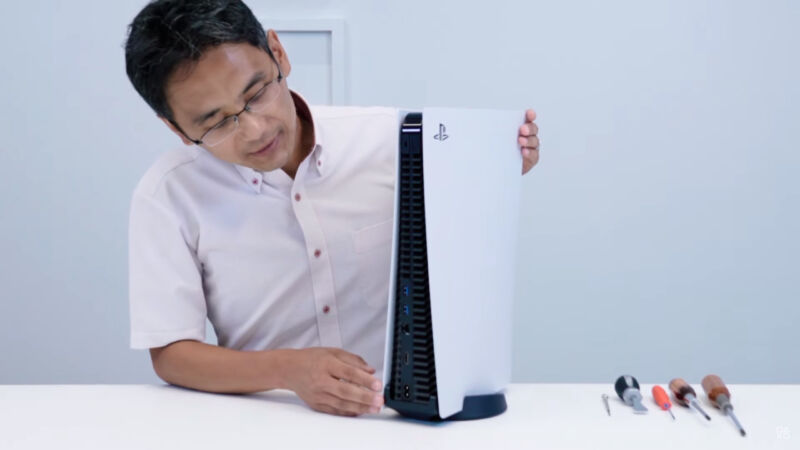
If you’re a potential PlayStation 5 owner who has been unable to find the console on store shelves over the last 18 months, Sony has good news and bad news for you.
The good news is that the company now expects to produce 18 million PlayStation 5 units worldwide for the current fiscal year, which runs through March 2023. That projection, from the company’s latest earnings report, is up over 60 percent from the 11.2 million PS5 units produced and sold in the last fiscal year.
The bad news is that Sony thinks that increase still won’t be enough to satisfy the sky-high demand for the PS5 in the coming months. “We feel that there was a little bit higher demand than that [18 million units],” Sony Executive Deputy President and CFO Hiroki Totoki said during an investor Q&A portion of the call. “If the question is whether we can meet the demand, I think [we are] still short somewhat.”
“We are still behind or short”
Totoki went on to acknowledge that the current stock of available PlayStation 5 consoles at retail “still remain[s] very low” and that in terms of “provid[ing] our PlayStation units to customers smoothly on a timely basis, in that sense, we are still behind or short.”
That’s all a bit of an understatement. PS5 shipments that reach major US retailers routinely sell out in minutes of their occasional listing, according to stock tracker NowInStock. On sites like eBay, recent listings for the higher-end version of the console are routinely selling in the $600 to $750 range, a significant premium over the $499.99 retail price.
In supply-and-demand terms, that means Sony has to dig out of its current production deficit before it can hope to satisfy future demand. And while Totoki said Sony has “not given up” on procuring the components to produce even more PS5 systems this fiscal year, “at this point in time, what we can say safely is that we can achieve the necessary components for 18 million units. “
And even that number might be hard to achieve if recent history is any guide. Sony initially projected it could produce and sell 16 million PS5 units in the last fiscal year. As component supply issues became clearer, though, the company was forced to cut that projection twice, first to 15 million last November and then to the relatively accurate 11.5 million in February.
Totoki said during the earnings call that Sony is “very comfortable that we can get the parts and components” to meet this fiscal year’s 18 million unit projection despite continuing worldwide chip shortages. But some industry watchers are publicly wondering if Sony’s projections for this year’s production will end up as overly optimistic as last year’s initial predictions.
An industry-wide problem
Almost every console this side of the Wii U sees its first few shipments sell out quickly to early adopters. But widespread console shortages that last a year or more after launch are rarer, bringing back memories of the Nintendo Wii’s unexpected sales success.
The long-running worldwide shortage of computer chips continues to disrupt the market for this generation of consoles, though.
While Microsoft’s Xbox Series X has also faced widespread retail shortages well into 2022, the cheaper and lower-powered Xbox Series S has been relatively easy to find on store shelves. The Nintendo Switch has similarly seen widespread shortages for its newer $349 OLED model, but the $299 standard model has been a bit easier to find.
Unexpected supply issues also led to a short postponement of the Steam Deck’s planned 2021 launch.
